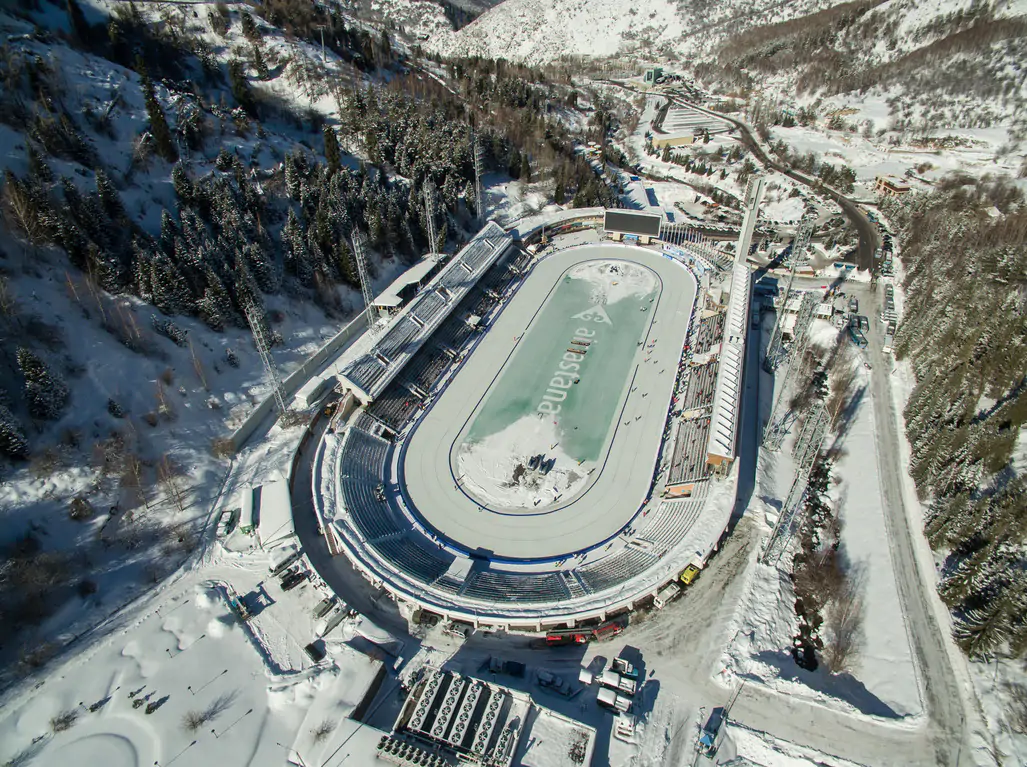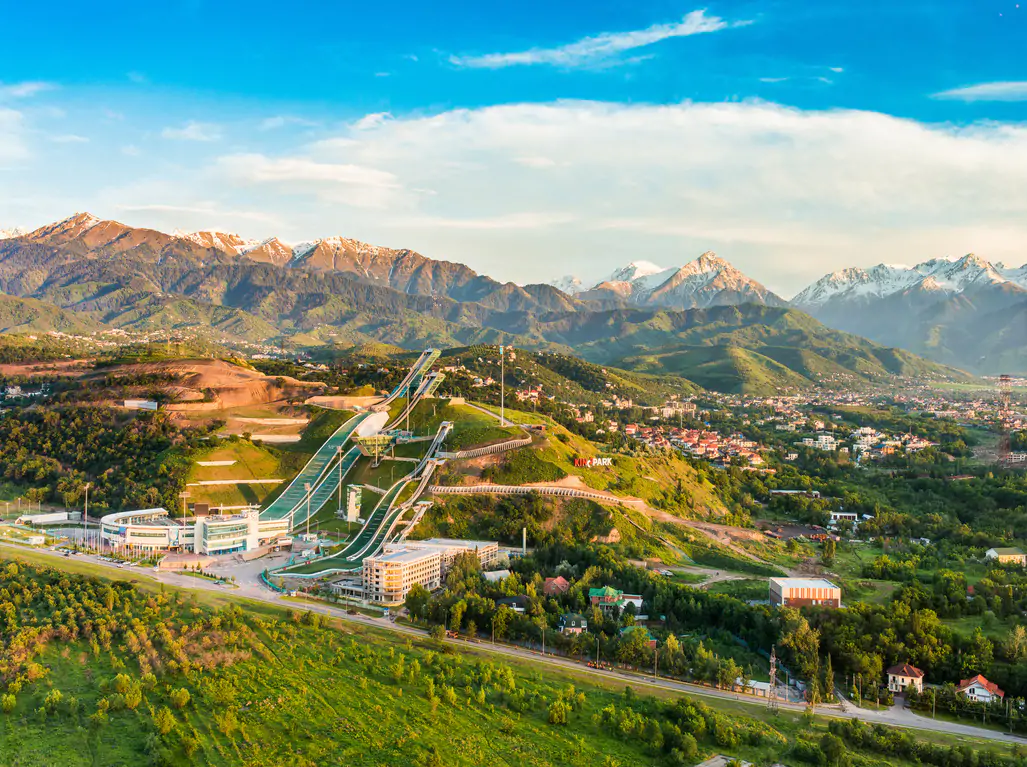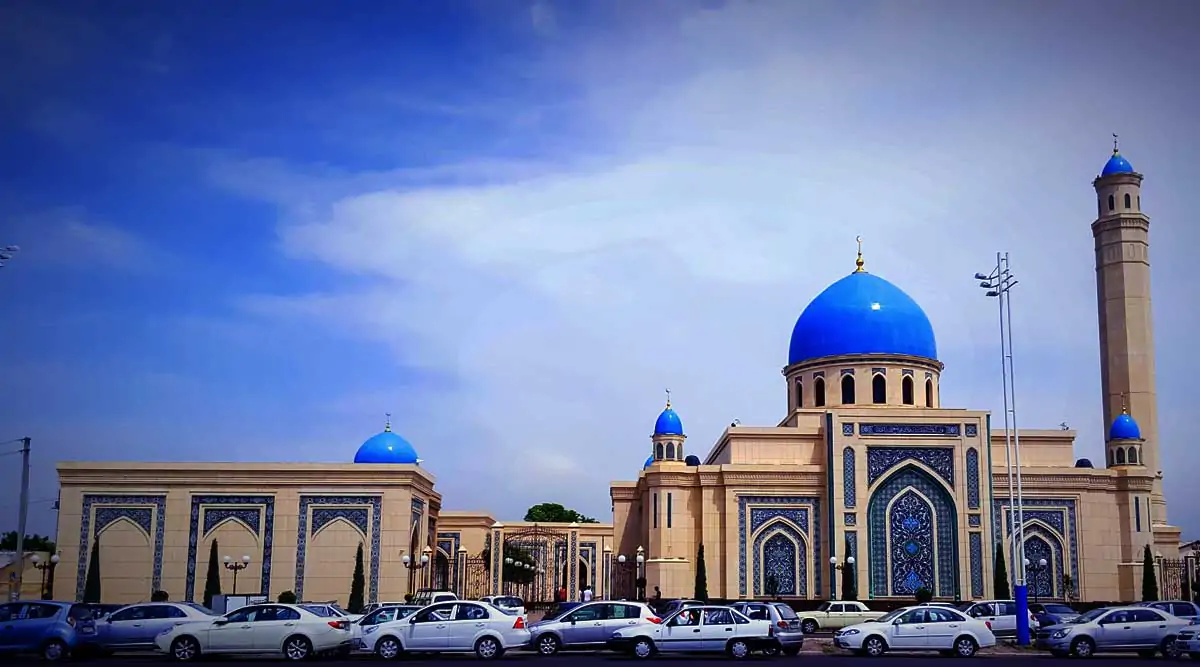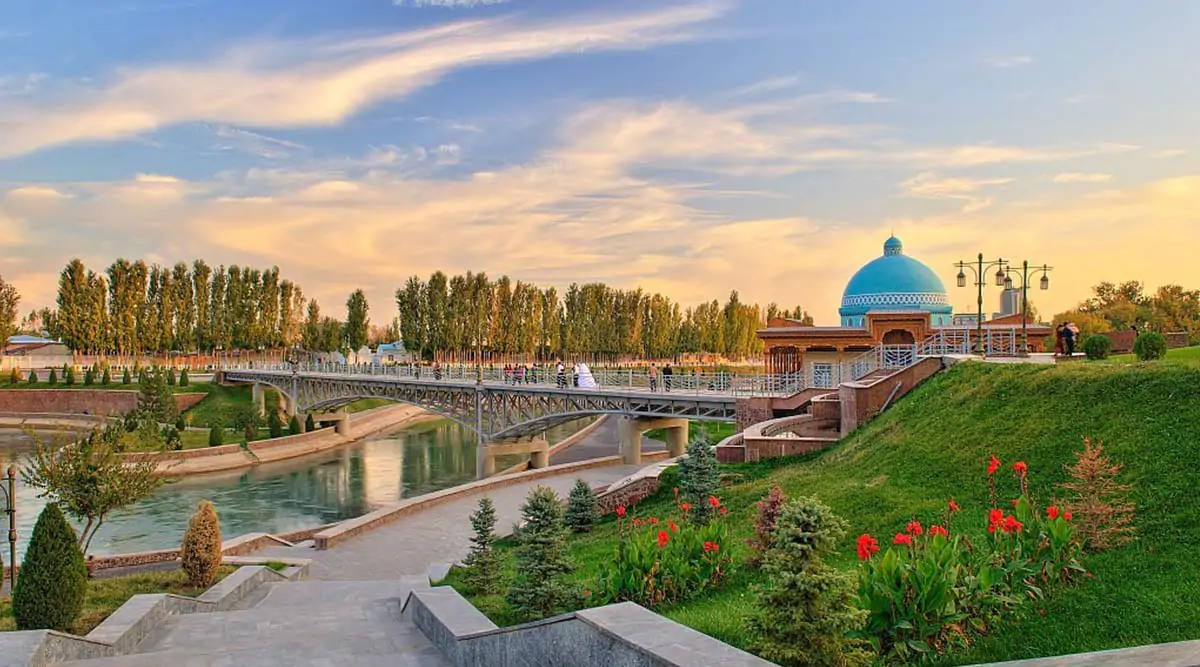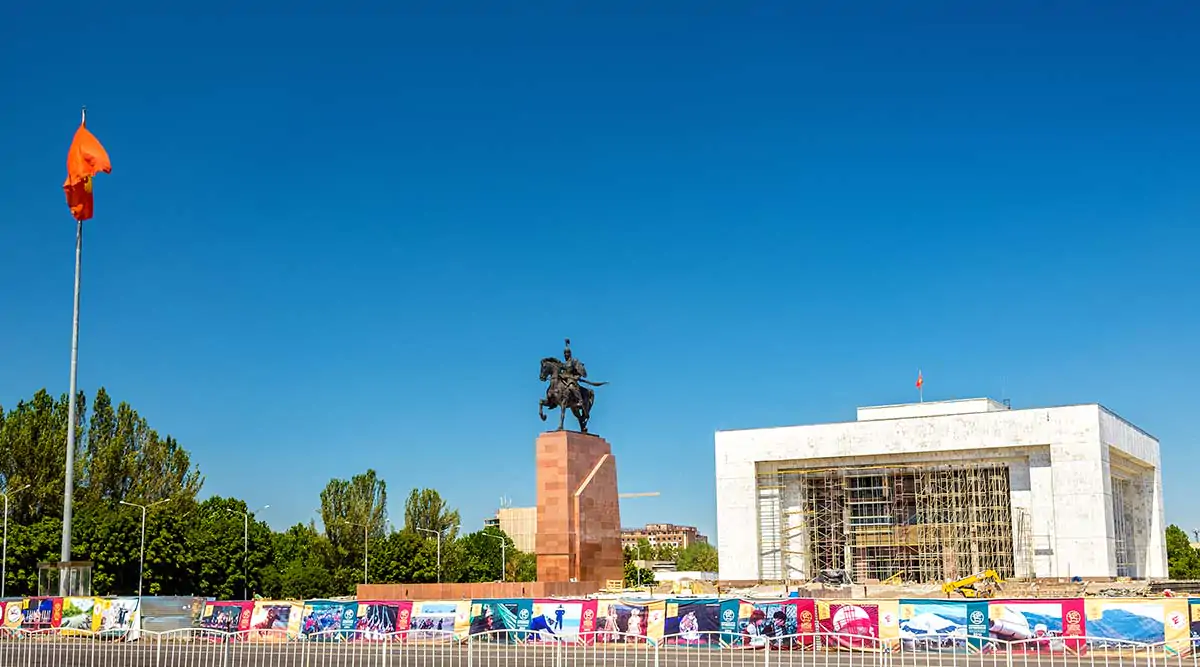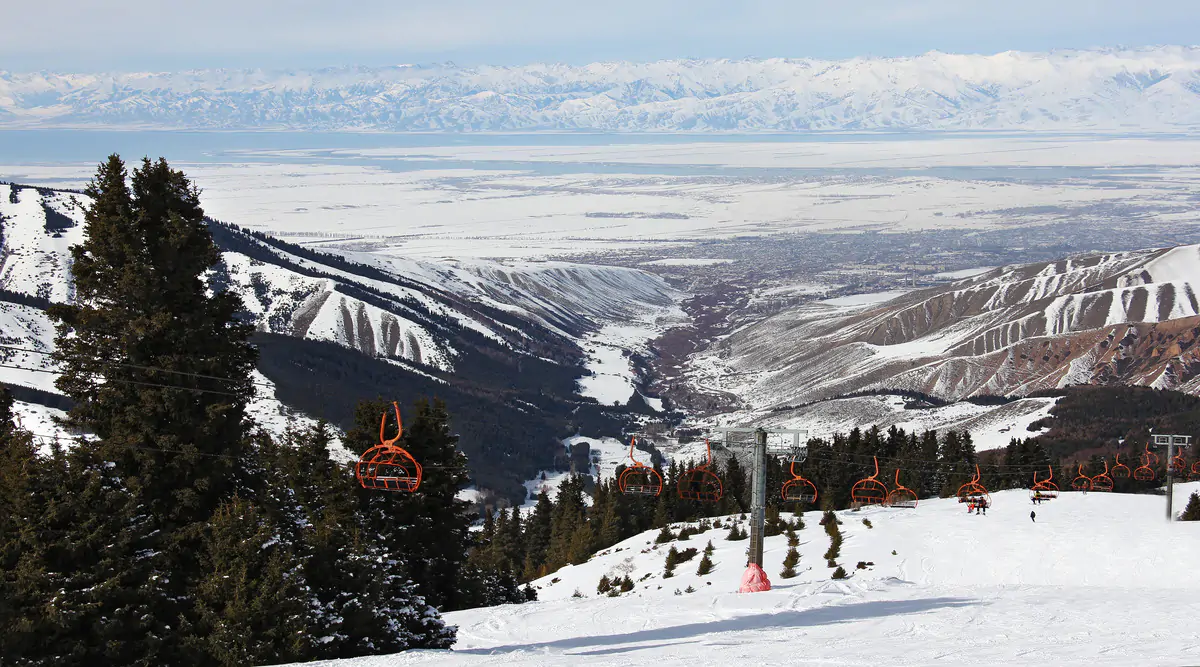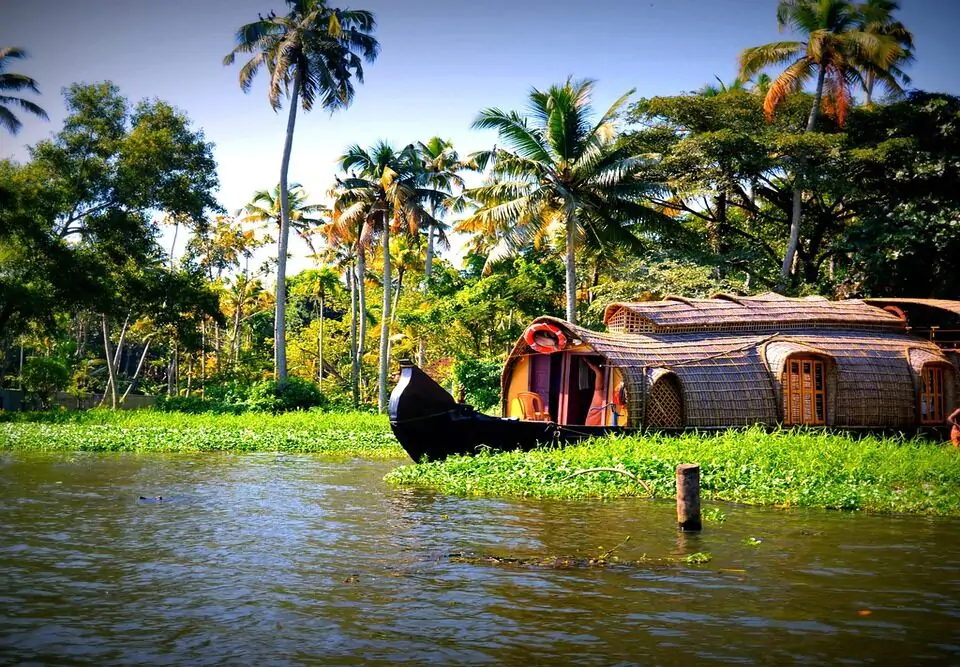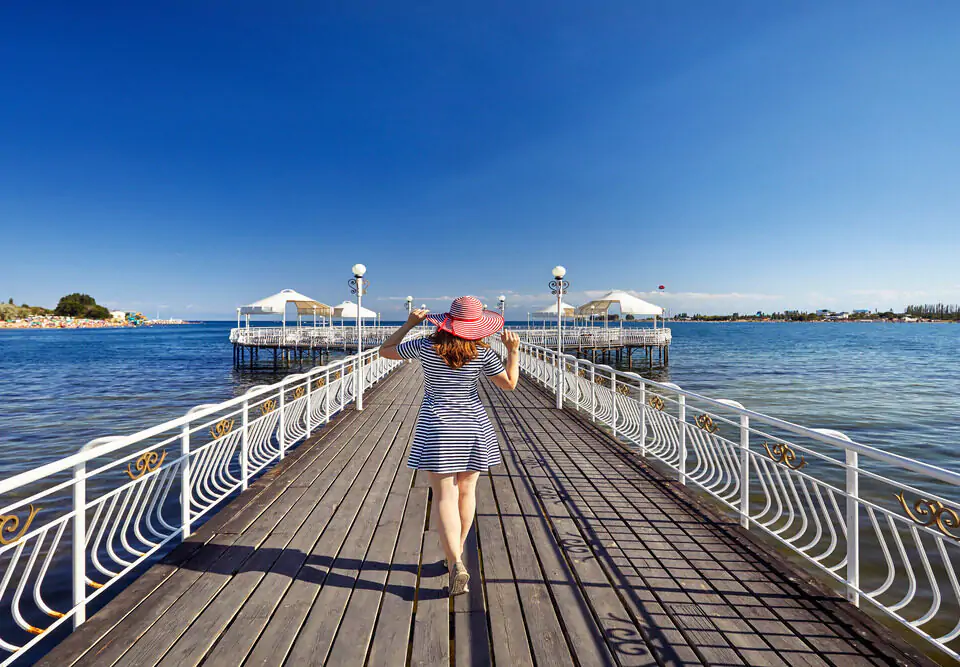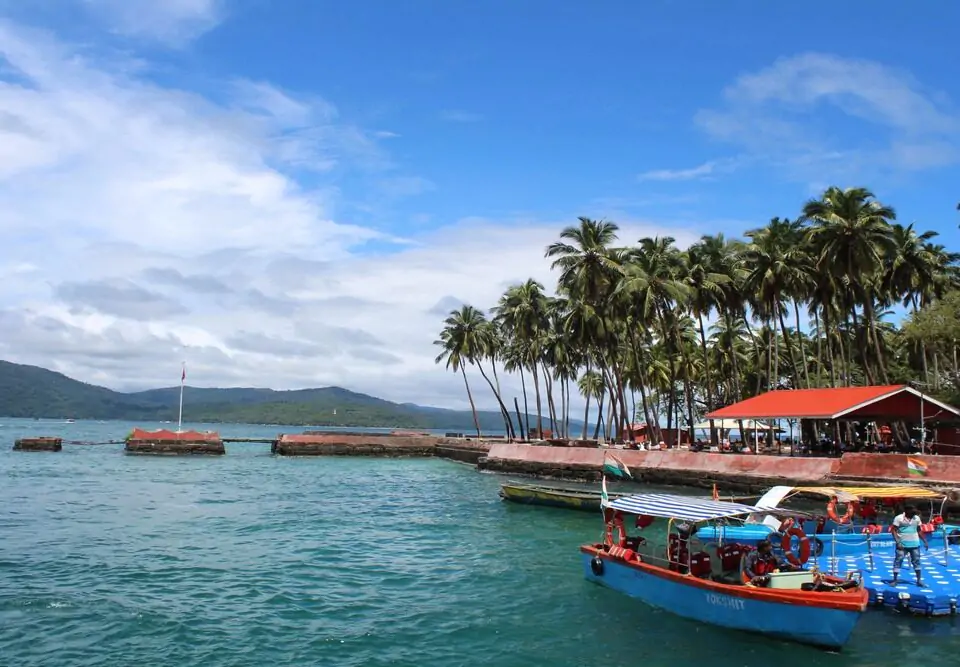Classical Stay Inn Almaty + Astana ( Kazakhstan )
Destination Details
- Flight
- Food
- Sight Scene
- Travel Guide
- Transport
Package Overview
Explore Almaty city during the brief and comprehensive guided tour! Get the first view of the cultural and business districts of the southern capital of Kazakhstan. Enjoy an amazing mountain view in the Medeo valley…Almaty is a clean city except for the air, the smog is frequent because the city is located in the intermontane basin. The city is easy to understand, with long straight streets and low architecture, bearing unmistakable stamp of Russian influence.
DELHI – ALMATY – KOK TOBE TOUR
MealsDinner
ALMATY - CITY TOUR - RAKHAT CHOCOLATE FACTORY TOUR
Meals Breakfast, Lunch and Dinner
ALMATY- MEDEU SKATING RINK & SHYMBULAK WITH CABLE CAR RIDE
Meals Breakfast, lunch and dinner
ALMATY –SHOPPING TOUR
Meals Breakfast, Lunch and Dinner
ALMATY - ASTANA (Via)
Meals Breakfast, Lunch and Dinner
ASTANA - DELHI
- Accommodation on Double/Twin Sharing basis
- Complimentary Bottles of Mineral water as per specified;
- Meals on full Board basis: 05 Buffet breakfasts at your hotel; 04 Lunch as Per Itinerary at Indian + Local restaurants; 05 Regular Dinner at Indian Restaurant;
- All Sightseeing as per above tour itinerary
- Services of Professional English speaking tour guide
- All transfers as per itinerary by AC Luxury Coach
- Return Airfare from Delhi – Almaty - Astana - Delhi with all taxes
- All taxes
- Charges in hotels for additional services
- Photography and video making fees at the sites
- Personal insurance
- Tips and gratuities
- Any services not included in the above itinerary
- Entrance ticket to Sites
Travel Guide
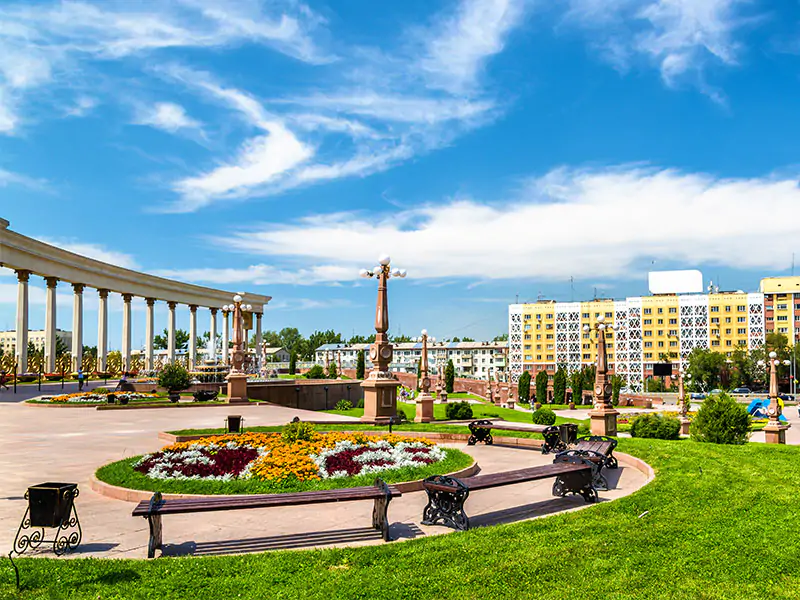
- KAZKHSTAN
- ASTANA
- 2.717 MILLION KM²
- 34°C, Wind
- 4:10 PM
- KAZAKHSTANI TENGE
- KAZAKH
- 17.04 MILLION
General Information About Kazakhstan
Kazakhstan, a Central Asian country and former Soviet republic, extends from the Caspian Sea in the west to the Altai Mountains at its eastern border with China and Russia. Its largest metropolis, Almaty, is a long-standing trading hub whose landmarks include Ascension Cathedral, a tsarist-era Russian Orthodox church, and the Central State Museum of Kazakhstan, displaying thousands of Kazak artifacts.
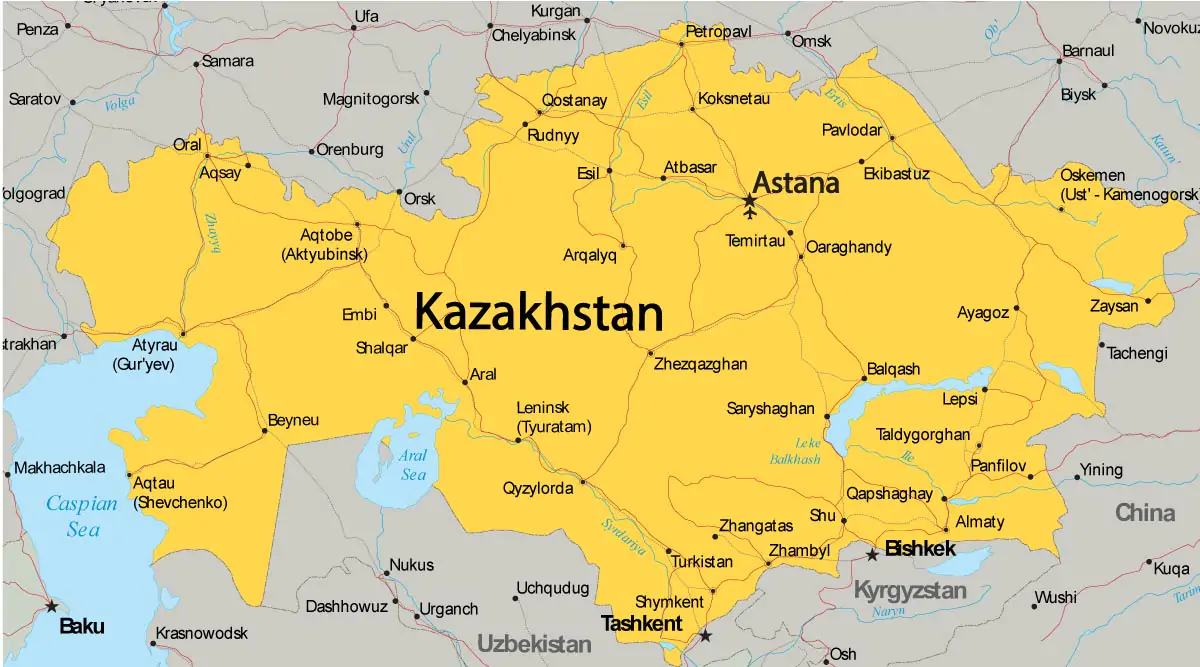
Kazakhstan has a long and fascinating history, going back thousands of years. Some remnants are still visible today such as Great Silk Road monuments, petroglyphs and sometimes even mysterious archaeological sites. The Amazons might have originated from Kazakhstan, the first steppe nomads are supposed to have emerged from here and it is very likely that Genghis Khan was buried in Eastern Kazakhstan. In recent times more and more details about Kazakh history and culture have been re-discovered, making the country also more and more interesting for domestic and international culture seekers. The territory of Kazakhstan came to be mastered by a man nearly a million years ago. As early as the age of the Lower Paleolithic, the ancient man settled down on these Karatau lands fit for a normal life, rich with game and wild fruit. It is here that they have found ancient settlements from the Stone Age. By and by, in the centuries of the Middle and Upper Paleolithic, a man came to master Central and Eastern Kazakhstan and the Mangyshlak area. As has been shown by excavations of the Neolithic settlement Botany in Northern Kazakhstan, Kazakhstan constitutes a region of horse domestication (breeding) and that of the formation of nomadic civilizations. Archeologists have revealed dwellings and numerous hand-made articles of stone and ivory which present the ancient history and archeology of Kazakhstan in the Stone age in an altogether new way.
As early as the Bronze Age, some four millennia ago, the territory of Kazakhstan was inhabited by tribes of the so-called Andron and Begazy-Dandybay culture. They were engaged in farming and cattle-breeding and were fine warriors who handled combat chariots marvelously. To this day we can see images of chariots drawn on rocks where ancient people would arrange their tribal temples and sanctuaries with the firmament as their natural cover. On the surfaces of black cliffs burnt with the sun, people would chisel out scenes of dances, images of sun-headed deities, mighty camels and bulls as impersonations of ancient gods. Burial mounds of noble warriors scattered all throughout Kazakh steppes are known for the magnificent size both of the mounds and burial vaults proper. Particularly famous are such necropolis in the steppes of Sary-Arka and Tagiskent in the Trans-Aral area. People of that epoch were not only fine warriors, shepherds, and farmers but also skilled metallurgists. They would take bronze and manufacture axes, knives, daggers and various decorations thereof. It was they who initiated the development of copper which is being practiced to this day - they are the Zhezkazgan and Sayak copper mines of today. Ancient people lived in large settlements and ancient towns surrounded by walls and towers. These towns were inhabited by warriors and craftsmen, priests and farmers. These tribes lived on the territory of Kazakhstan for about a thousand years - from the 17th century B.C. to 9th-8th centuries A.D., Later on, they were ousted by the Saks. Such was the name given to this tribe by ancient Persians. The Chinese called them "se" whereas Greeks chose to call them Scythians. They were essentially nomads, semi-nomads and farmers. Yet, first and foremost, they were excellent horsemen. In fact, Saks was the first ever horsemen in the world to master arrow-shooting at full speed.
In the 5th-2nd centuries B.C., the Saks set up their first state with its center in the Zhetysu (Semirechje) in South-Eastern Kazakhstan. The kings of the Saks were at the same time, high priests. Saks had a written language and mythology of their own; they were known for their well-developed art of world standard labeled in research papers as "animal-style art". Respective subjects were represented by predators and herbivorous animals and the struggle there between. Sheer masterpieces made of gold and bronze serve as worthy exhibits in the best museums of the world. The linguistic situation was just as complicated. As is traditionally believed, in the course of the first millennium B.C., the population of Kazakhstan was mostly represented by native speakers of Indo-European and Indo-Iranian languages. However, of late, they are inclined to think that the tribes of the Bronze Age, particularly those of the Saks, included tribes that spoke proto-Turkic languages. In the Issyk burial mound which harbored the world-famous "Golden Man," they have found a silver bowl whose bottom bore an inscription consisting of 26 characters. They have failed to read it to this day. Some think that the inscription is made in one of the Iranian languages, others insist on its proto-Turkic origin. In any case, this must be the very period that highlighted the formation of the state of mind and the language of medieval and modern Kazakhs, their physiological stereotypes, in fact, of many an element of their culture, everyday life, and folk rites. The middle of the first millennium A.D. is a fairly important stage in the history of all Turks in general and Kazakhs in particular. The period is marked with manifest changes in ethnic media: predominant now become Turkic tribes which chose the Altai as their natural center. Written sources of the 6th century register the term "Tyurk" which is pronounced as "Tutszyue" by the Chinese and as "Turk" by the Sogdians. Archeological studies of Turkic monuments make it possible to somehow compare "these" Turks with certain Turkic tribal associations.
In the Sayano-Altai region they have identified certain archeological cultures which might well be likened to early Kyrgyz, early Kypchaks or early Oguzes. In the course of not infrequent internecine wars, tribal discord, and struggles for power and pasture, a part of the Turkic tribes which inhabited the steppes and valleys of Kazakhstan moved southwards - to Central Asia (say, Tyurgeshes, Karluks, Kypchaks, Uzbeks, Oguz, and Turkmens-Seldzhuks), to Asia Minor, to the Caucasus (Turkmen and Seldzhuks), and to Eastern Europe (Kangars and Pechenegs, Kypchaks-and-Polovtsians, Torks-and-Oguz, black Klobuks and Karakalpakians). Starting from the 4th century up to the beginning of the 13th century, the territory of Kazakhstan was the seat of West-Turkic, Tyurgesh, Karluk Kaganates, of the state made by the Oguz, Karakhanides, Kimeks, and Kypchaks. All of them successively replaced one another right up to the Mongol invasion. After the invasion, i.e. at the beginning of the 13th century, uluses of the Mongol Empire of Zhuchi-Khan and Zhagatai were formed, which later gave birth to Ak-Orda, Mongolistan and finally to the Kazakh Khanate. Essentially all these states were mixed economies. Tribes of cattle-breeders had farming tribes as their neighbors, and steppes and cities supplemented each other. Such cities as Taraz, Otrar, Ispijab, and Talkhir were set up right in the middle of the Great Silk Road, which served as a reliable link joining antiquity and the Middle Ages, the West and the East: Japan, Korea and China with Central Asia, Iran, the State of the Seldzhuks, Rus, Byzantium, France and Italy. It is through the Great Silk Road that dancing arts, painting, architecture and music made their way from one people to another. Incidentally, it was the way along which various religions advanced: Manichaeism and Buddhism, Christianity and Islam, with the latter becoming predominant (starting from the 8th century) and subsequently the solitary faith of the Kazakhs.
In the late 14th-early 15th century, on the banks of the Syrdaria River in the city of Turkestan, they erected a religious sacred place worshipped by all Turkic-speaking nations - the complex of Khodja Akhmed Yasavi. The nation that inhabited the territory of Kazakhstan would avidly absorb and assimilate all the ideas and achievements of various civilizations, making - in its turn - its own contribution to the treasury of world culture, be it economy or handicraft or music: among numerous accomplishments one may name the mobile dwelling "yurta", saddles and stirrups for horses, combat arts on horse-back, carpet ornaments and silver jewelry, sweet melodies and music reminding one of the impetuous gallops of steppe horses.
Southern Kazakhstan
Almaty, Jambyl, South-Kazakhstan and Kyzylorda regions is an area rich with ancient history and culture are known for such famous monuments of medieval architecture as mausoleums of Aisha-Bibi, Karakhan, Babadzha-Khatun in Taraz, an architectural ensemble of Khodja Akhmet Yasavi in Turkestan, etc. This list may be nicely supplemented with unique Scythian burial mounds in Semirechje (Almaty region). It is, incidentally, the very region that has played host to the world-famous space-vehicle launching site Baikonyr. Besides, the region affords unique climatic opportunities for recreation, rehabilitation, hunting, alpinism, mountain-skiing, and skating.
West Kazakhstan
Aktobe, Atyrau, Mangystau regions are situated on the crossroads of the European and Asian continents in the basin of the Caspian Sea, the Volga, and the Ural. It is the location of the world second deepest depression – that of Kargije lying 132 m below sea level, remarkable chalky rocks. Tremendous scientific interest present reserves and monuments of ancient Mangyshlak and Ustyurt, numerous memorable places evoking Kazakh epos.
North Kazakhstan
Kostanay, North-Kazakhstan and Pavlodar regions. Everything here – landscape, climatic conditions – favor all sorts of tourist recreation – automobile, bicycle, water ones. Health resorts of Kokshetau, Bayan-aul, Muyaldy offer fine rehabilitation opportunities while natural preserves Kurgaldzhino and Naurzum would be quite interesting for amateurs of “cognitive” tourism.
Central Kazakhstan
Karagandy region displays to perfect advantage one of the largest lakes of the world – the lake of Balkhash supplemented by a unique mountainous and forest oasis. The area harbors plenty of memorable places exhibiting various archaeological and ethnographic relics.
East Kazakhstan
East Kazakhstan is represented by the Altai and its wooded foothills, the river of the Irtysh and such lakes as Zaisan, Markakol, Alakol, Sauskan. Fairly rich are flora and fauna of the region. Besides Semipalatinsk region is the birthplace of the great Kazakh poet – enlightener Abay Kunanbaev, remarkable writer Mukhtar Auezov.
Alakol Lake
Alakol (Multi-colored lake) is one of the most unique lakes in Kazakhstan. It is located in the south-eastern part of the Republic on the border with China. Alakol Lake is the biggest lake of the whole chain of Alakol lakes. It is unique in its beauty and wildlife. The lake is located 347 meters above sea level, it is 104 km long and 52 km wide. The lake's shore has a unique black medicinal pebble. The water of Alakol lake has the same structure as sea water: chloride-sulfate-sodium. Alakol's water is warm and the average summer temperature of the water is 26 degrees Celsius. The lake's water is said to be helpful in treating many skin diseases and has a good effect on arthritis, the nervous system. It also improves the general condition of the body. Alakol valley is in the zone of insufficient moistening and it is a great climate for treating lung diseases. Good results of treating such diseases as psoriasis, eczema, neurodermatitis, and nettle-rash have been proven scientifically and in practice. Tourists can stay at the recreation center "Arktur" located in the Northeast region of Almaty and is located on the southwest coast of the lake.

People Of Kazkhstan
Kazakhstan has a population of 15, 07 million people. The ethnic Kazakhs represent 60% of the population. Also, Kazakhstan is inhabited by more than 120 nationalities, which preserve their language, historical and cultural values. The largest ethnic groups, living in modern Kazakhstan, are Russians (25%), Ukrainians (2.9%), Uzbeks (2.8%), Germans (1.5%), Tatars (1.5%), Uyghurs (1.5%), as well as representatives of other nationalities. The Republic of Kazakhstan is one of the most underpopulated countries in the world: population density is only 5-7 persons per square kilometer. Also, Kazakhstan is the most urbanized country in Central Asia. The urban population represents over 60% of the total population. The most populous city in Kazakhstan is the "Southern capital", Almaty, which numbers about 1.5 million inhabitants today.
When to go
Like the rest of Central Asia, Kazakhstan has hot summers and very cold winters. During the hottest months, July and August, average daily maximums reach the high 20°Cs in Almaty and Astana. During the tourist low-season months of November to March, frosty mornings are typical in Almaty and temperatures there typically remain below freezing for much of December, January and February. The ground is snow-covered for an average 111 days a year. In sub-Siberian Astana, there’s frost from October to April, with temperatures lurking between -10°C and -20°C from December to February. Annual precipitation ranges from less than 100mm a year in the deserts to 1500mm in the Altay Mountains. You can travel any time of year with the right preparation and logistics, but the most comfortable months are May to September. July, August and September are best for trekking in the southeastern and eastern mountains.
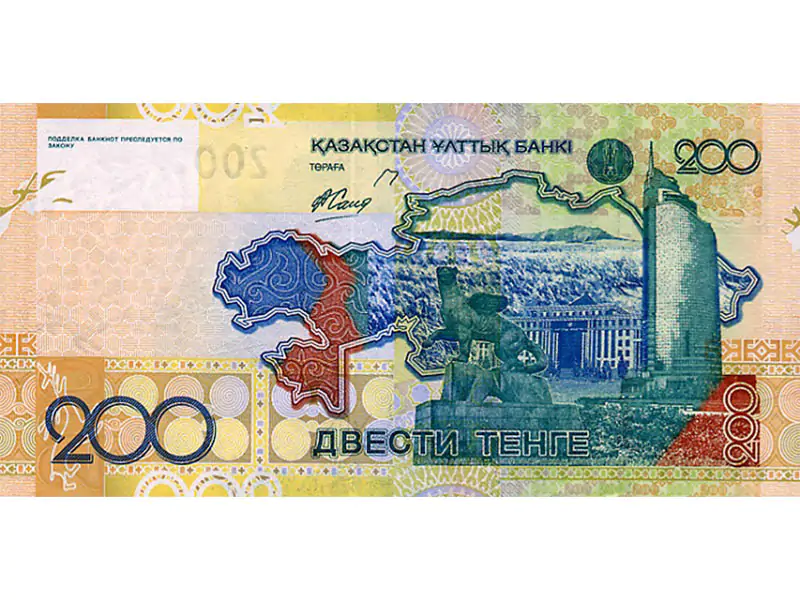
Currency Of Kazakhstan
On 15 September 1993 the Tenge was introduced as the national currency of Kazakhstan. One tenge is equal 100 tiyn. As of 1 September 1998, the following denominations are in circulation: 1, 3, 5, 10, 20, 50, 100, 200, 500, 1000, 2000 tenge and coins of 1, 3, 5, 10 tenge and 1, 3, 5, 10, 20, 50 tiyn. Besides, jubilee coins of 20 tenge denomination were issued. The first postage stamp of Kazakhstan appeared on 20 Mach 1992. It describes "The Gold Warrior" from the Issyk burial mound. At present, there are over 200 stamps of the Republic of Kazakhstan put into circulation.

Nightlife Of Kazakhstan
Description: Striptease , disco , resturant , bar , Shisha smoking , girls Entrance ticket - 14$ USD Per Person Dress Code - No Sportwear , cannot be drunk before entering the night club.
Petroleum night club
Description : erotic dancing , disco , restaurant , girls Entrance ticket - 14 $ USD per 1 Person. Dress code - no sportswears , cannot be drunk before entering the night club
Kazakhstan Hotel VIP night club (on the roof on the 26th Floor)
Desription: striptease, disco, restaurant, bar, shisha smoking girls. Entrance ticket - 68 $ USD Per 1 Person (if there is a group of minimum 5 Persons) This price includes Entrance Ticket, Dinner, Striptease Dancing. Dress code - no sportswear, cannot be drunk before entering the night club.
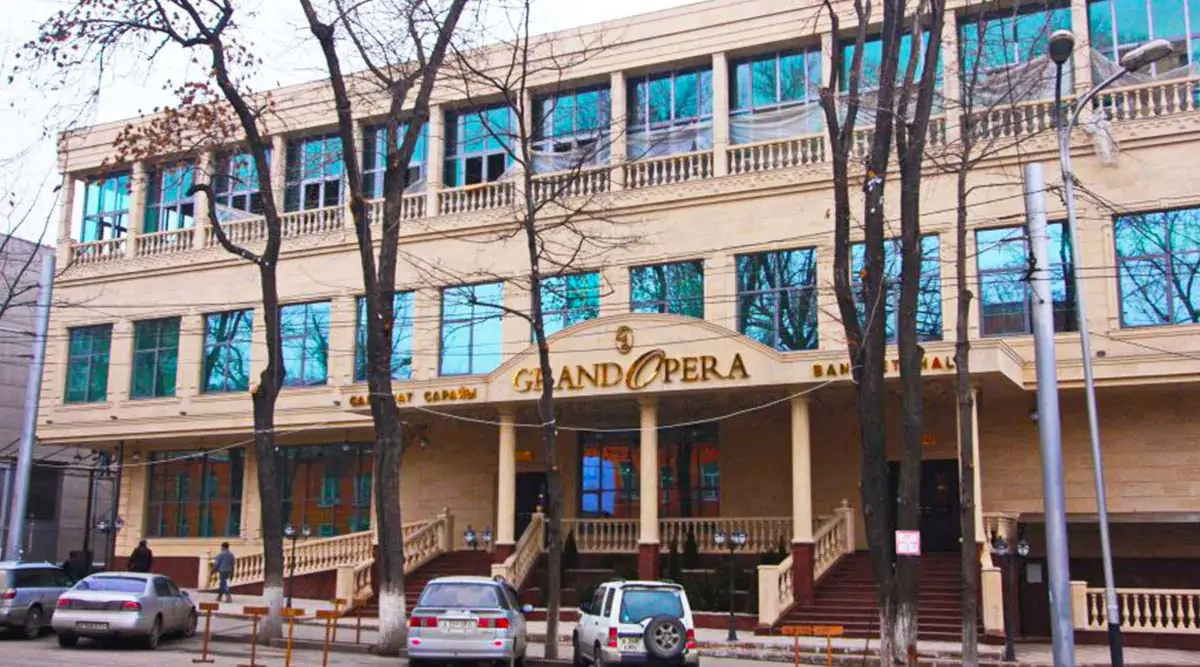
Hotel Grand Opera
Kazakhstan
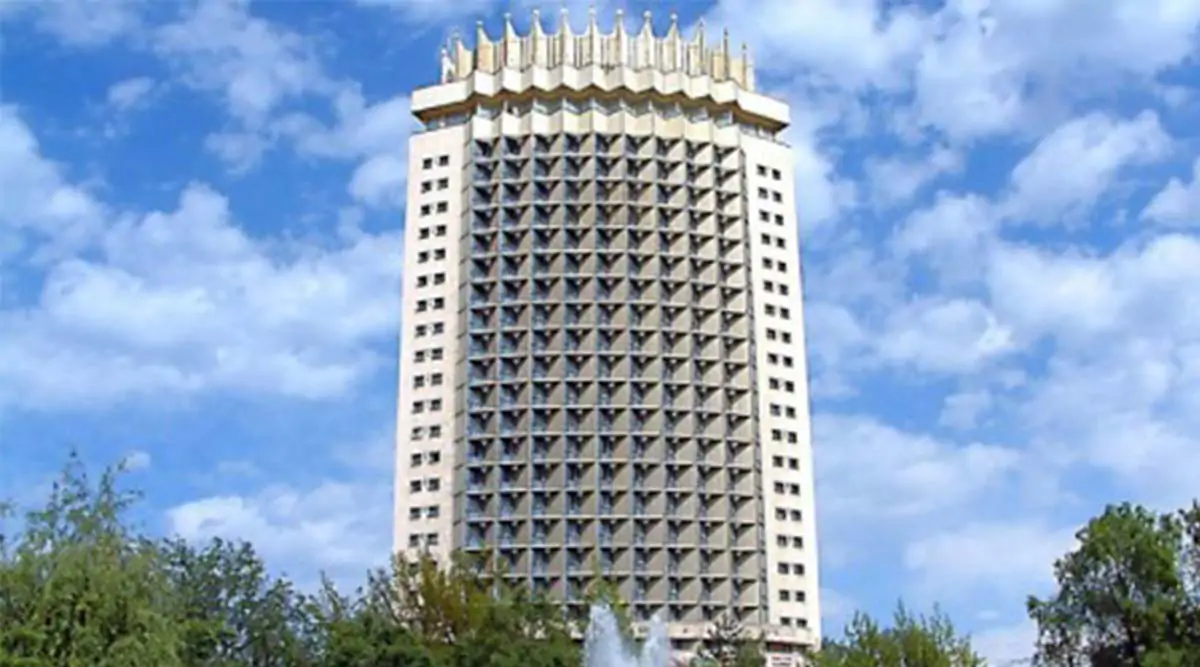
Hotel Kazakhstan
Kazakhstan
Almaty, Kazakhstan










